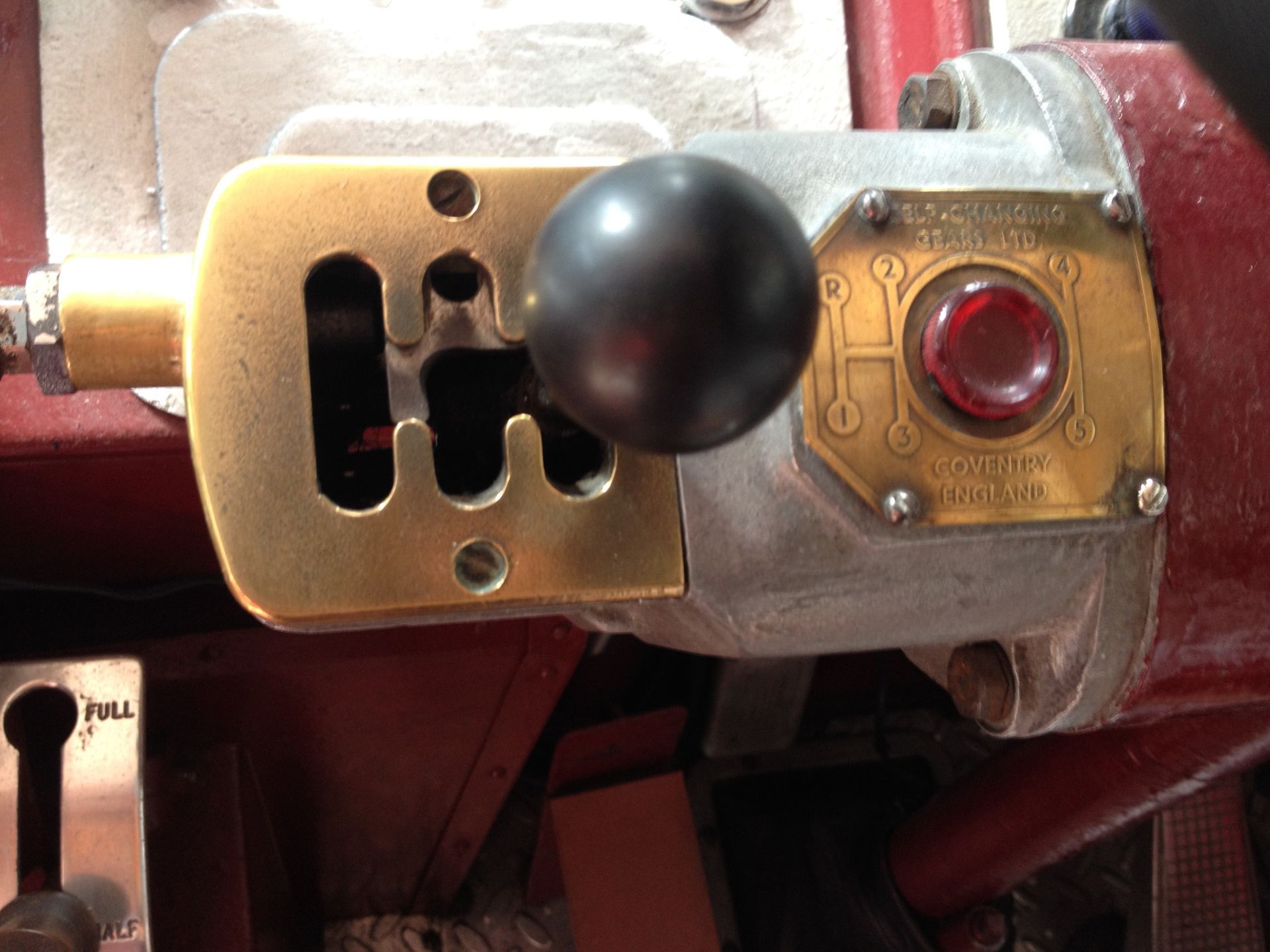
SELF-CHANGING GEARS
History
Established in 1928, the company was originally called Improved Gears Ltd. Later it was renamed Self-Changing Gears. SCG was a British company, set-up and owned by inventor Walter Wilson and John Siddeley, to develop, build and sell the epicyclic pre-selector gearbox, which Wilson had designed.
In 1935, Siddeley sold his interests in Self-Changing Gears to Hawker Aircraft forming Hawker Siddeley. In 1938 SCG establish a specialist gearbox factory at Lythalls Lane, Coventry.
Leyland Motors Ltd bought into the company in 1951, resulting in each party owning one-third of the company. Then in 1957 Leyland bought the Hawker-Siddeley shares, thereby gaining control of SCG.
After Walter Wilson died in 1957, his son, Gordon Wilson took over the running of SCG until his retirement in 1965.
In 1986 Leyland Motors Ltd sold the business to American engine manufacturer Cummins.
How it works
The name Self-Changing Gears is confusing. Most of their gearboxes were not fully automatic, selection of a gear ratio remains a manual choice, but the actual gear-changing inside the gearbox is automated. The gearboxes were used in conjunction with a fluid clutch or fluid flywheel, so no clutch pedal was needed. Before 1960, as well as a gear selector, the driver also had a pedal. To change gear the driver first used the gear lever to pre-select the next gear. Then, when ready, the driver pressed the pedal to activate the gear change to take place. Hence this gearbox was called the "Pre-selector".
In the late-1950s SCG designed a semi-automatic gearbox, under the brand name "Pneumo-cyclic". It had the same gearbox principle, but instead of pre-selecting a gear and then separately operating a change-gear pedal, both functions were combined and operated from a small gear change lever alongside the steering wheel. To change gear the driver simply moves this lever into the next gear position and the transmission responding accordingly. The lever is either an air pressure valve or a 24-volt switch. In the case of the air valve this directs compressed air directly to the gear bands in the gearbox. With the electrical system, there is an electro-pneumatic unit (located near the gearbox), which uses a series of electric solenoids (one per gear ratio) to send air pressure to the corresponding gear band in the gearbox.
SCG did produce a fully automatic gearbox, which used the same basic principles, but shifted the gears automatically. This was pioneered on the AEC Routemaster, and later spread, to some other bus/coach chassis types. The SCG Pneumo-cyclic gearbox was used by most British bus/coach chassis makers, until fully-automatic gearboxes became the norm during the mid-1980s.
Applications
The company designed, built and licensed their gearboxes for use in lorries, buses/coaches, cars, military vehicles, marine applications, and diesel-engined trains.
The bus/coach chassis manufacturers were major users of SCG gearboxes. Buses on urban routes need to stop and start frequently, meaning the driver has a lot of work to do with a manual gearbox.
From about 1935 to 1960, bus chassis makers AEC, Daimler (and sometimes Bristol, Guy and Leyland) used SCG “Pre-selector” gearboxes, either as an option or as standard. London Transport buses used this transmission. Buses in smaller towns and on country routes still used manual gearboxes as they did not have constant stop/start operation. The London specification used compressed air operation of the change-gear pedal, where others used unassisted operation.
During the 1950’s, bus/coach chassis design changed from traditional vehicles with the engine at the front, to a layout where the engine was under the floor in the middle of the chassis. For these new chassis SCG developed the semi-automatic gearbox. This is the gearbox system that our Ruby has.
Many of British Railways' first-generation diesel multiple units (DMU's) and shunting locomotives also had SCG gearboxes. Examples include DMU classes: 100, 103, 104, 141, 142, 143, 144 and 150.
Watch a Leyland training video from the early 1980's about the SCG Pneumo-cyclic semi-automatic gearbox
here >
-
Button
Gear change lever in the drivers cab of Ruby.
-
Button
Fluid flyweel and shaft running to gearbox fitted to Ruby.
-
Button
SCG gearbox fitted to Ruby. Notice that the input and output shafts are on the same side of the box.
-
Nature's Symphony
ButtonAdvert for Self-Changing Gears gearbox, as used in British Rail DMU's.
www.redandwhitebus.com Website design & copyright: Radley Creative, Oxfordshire. 2024.




